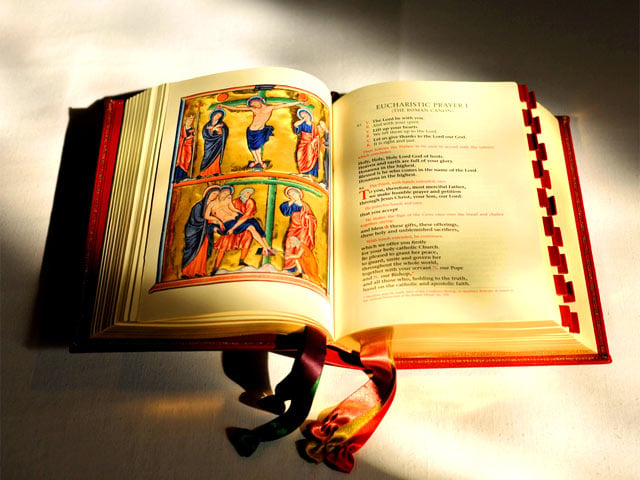- Accueil
- Notre communauté
- Notre foi
- Nos ministères
-
Vie paroissiale
- Calendrier des événements
- St. Aidan's Video Links
- Blog paroissial
- Archives des nouvelles
- Mass Etiquette and Information
- Ad Orientem News and Facts
- Catholic Links
- Prayers and Announcements
- Luis Dizon Reflections - Archive
- Bulletin
- Nous contacter
- Recherche

Hearing God’s Word (3rd Sunday in Ordinary Time)
Click here for this Sunday’s readings
The book of Nehemiah details the return of the Jews from the Babylonian Exile back to the Promised Land. This was a pivotal moment in Israel’s history, as they attempted to reconstruct what had been destroyed seventy years earlier, including Jerusalem’s walls and the Temple that stood at Mt. Zion. However, they would never rebuild Jerusalem to its former glory.
Central to Nehemiah’s story was bringing knowledge of the Law to the returnees. Many of them had become accustomed to Babylonian customs, and it was necessary to re-acquaint them with the precepts of the Law so that they do not forget them.
The emphasis of Old Testament reading is on making sure that the Law was heard by as many people as possible. Everyone who could understand was to come and listen to the reading of the Law (v.2). The scribe Ezra read it from a platform (v.4), which enabled the reading to be heard by as many people as possible, and also served as a visual representation of the primacy of the Law to the life of Israel.
But it was not enough to merely hear the Law. They had to understand it as well, since they were to act upon it. Levites were stationed among the people to explain the meaning of the Law to them (v.7). This included translating the text from Hebrew to Aramaic, since Aramaic was adopted by the Jews as their spoken language.
This passage shows the importance of disseminating knowledge of Scripture among the masses. Pope Benedict XV quotes from St. Jerome, who famously said “Ignorance of the Bible means ignorance of Christ.” (Spiritus Paraclitus §63) Elsewhere, Pope Leo XIII encouraged “all the children of the Church, especially clerics, to reverence the Holy Scripture, to read it piously and meditate it constantly” (Quoted by Pope Pius XII in Divino Afflante Spiritu, §9). These quotes show the Church’s longstanding tradition of encouraging Bible reading as an act of devotion.
We should especially meditate on those Old Testament passages which point forward to Christ, such as the passage of Isaiah that is read by Jesus in our Gospel reading (Luke 4:14-21). Such passages show the seamless connection between the Old and New Testaments, and how they present the full picture of God’s salvific plan.
Finally, we should not only read Scripture, but apply it to our lives. This way, we internalize its precepts and allow it to transform us into saints. Thus, we can say along with the Psalmist, “Your word is a lamp for my feet and a light for my path.” (Psalm 119:105)
J. Luis Dizon
